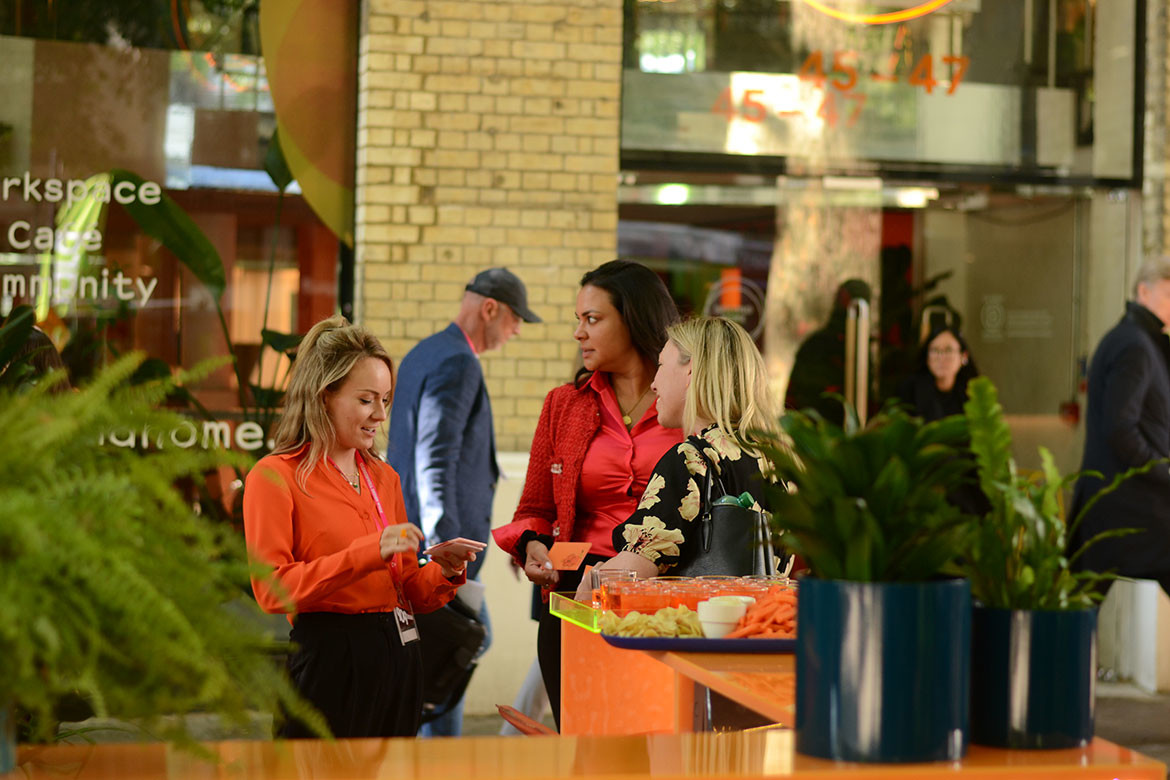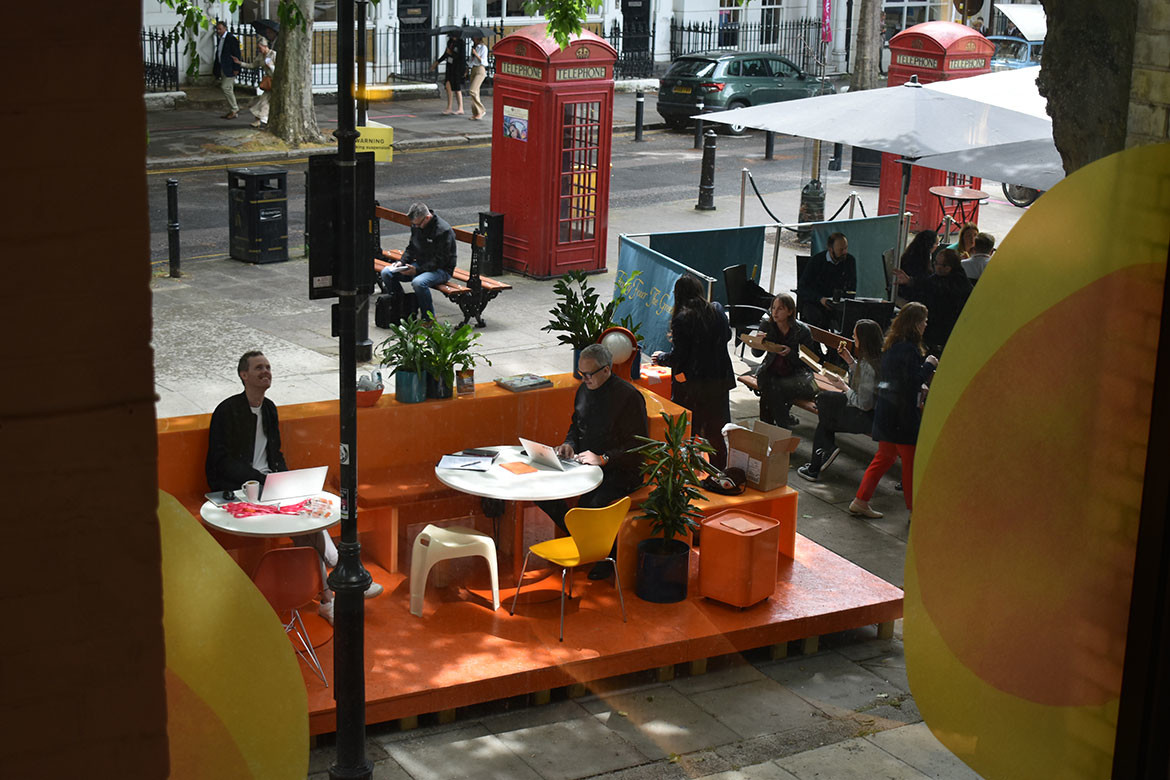

The design community of central London comes together once a year to showcase the best of what’s on offer in terms of products and insights. Naturally this year the world of workplace design, theory, and practice were hotly debated. BVN together with Second Home played host(ess) to this year’s conversations in an unmissable pop-up event space. And, brought its European, US and Australian insights to the table. This was WorkPOP 2022.
Workplace as a term has never stopped evolving. In fact, it’s useful to break down the term into ‘work’ and ‘place’ when trying to explain what it really means and, perhaps more importantly, how to action it in a world forever changed by the pandemic. Often, when we speak or read about the world of workplace, particularly in terms of design and strategy, we actually mean: work – the thing you do that’s influenced and made up of cultures, behaviours, roles, and tasks; and place – the physical environment in which you work and the service and infrastructure elements that support it.

Hybrid is a familiar term in the built environment. Historically, we’ve used it when discussing materials or mixed uses. But when it comes to the future of work, hybrid has come to mean something very different. Hybrid is a style or approach to work, a hybrid work ‘set up’ if you will. One where you take your energy and inspiration from different locations.
Hybrid should also be thought of as a scale rather than a one-size-fits-all solution as its application will differ according to the needs, objectives, and culture of each organisation. The combination of work environments should aim to support an employee fully in the role they do in addition to the other factors that keep them satisfied.
This transformation, along with further topics that uncover the many layers of the evolving work and place ecosystem, were brought to the fore at this year’s Clerkenwell Design Week. You could say it’s London’s answer to Saturday Indesign.
BVN, which is currently growing its presence in both Europe and North America, curated daily panel discussions around the theme of collective creativity to reimagine how, when, where and why we work. The talks brought together developers, strategists, researchers, heads of real estate and architects to share their experiences and ideas for the new work landscape.

We talked about:
Leadership
Being bespoke in your approach as an organisation to hybrid work is hugely important. One size never did fit all when it came to workplace, so why would it now, when there are other ingredients thrown in the mix? It is no easy feat to curate a strategy that works for the generation entering the workforce now, the demographic that’s well into their tenure, and everything in between.
It sounds like a generational problem, but it isn’t. It’s one for leadership.
Esme Banks Marr, strategy director, Work + Place, BVN
Only through listening, reacting and communicating can you work towards success. This may require upskilling and external support, but it will pay dividends and ensure you don’t lose talent. Strong leadership in a hybrid working world requires empathy, more than we’ve perhaps ever experienced before on a professional level, and it requires action and considered communication.
Employees need to know what’s expected of them and why. After so much trust was granted across the board in Spring 2020, organisations will need to explain how and why the parameters may be changing again.
Related:

Culture
Work is really just a manifestation of the way society works. Arguably, there is no work-life balance any more, not when we work from our kitchen tables a handful of days a week. There is merely a blend, and that blend is unique to everyone.
Employees’ relationship to work is at the top of the agenda and this is underpinned by culture. Questions are arising as to how to foster culture if you don’t have a physical workplace where people come together every day. It truly depends on who you were as an organisation pre-pandemic, and how you conducted yourselves during.
A lot of this comes down to the duty of care and communication you shared with your workforce and how you’ve engaged with them to create your future strategy. Culture cannot be forced, nor should it be ‘set’. It’s an organic symptom of behaviours, processes, people, and their sentiments.
A physical workplace stitches together these elements and allows for cultures to propagate, whether you’ve decided to give full choice over when and where employees work or begun by mandating days or frequency.

[In]differences
While we’ve all been in the same storm, we haven’t all been in the same boat. The experiences of the last two years have varied greatly, depending on many factors: where in the world you are, your home-work setting, your company’s size, government regulations, the number of dependents you have, your health, the type of work you do, how long you’ve been at your organisation, how you travel to the office, and more.
All these things impact how we feel about work and what we’re being presented with as a future framework. Averages from robust research are useful, but they mask highs and lows.
Inclusivity in today’s world means acknowledging that everyone is different. You can set a global or national strategy, but there is no singular model, or even a singular culture.
The individual work needs to take place to comprehensively understand what people need from their workplaces moving forward.

Ultimately, it’s clear that workplace is not just about spatial design… It’s about integrating the idea that the workplace is both a business tool and a placemaking tool. The synthesis of these things makes workplace design truly valuable for any organisation with a physical presence – in whatever guise.
We can easily say that the pandemic has demonstrated that choice and flexibility is paramount. But more than anything, it’s about human-centric places and spaces. This remains the tenet that our workplace industry needs to have at heart.
Esme Banks Marr, strategy director, Work + Place, BVN
You can read more about how BVN is reimagining work + place in this case study about Queen & Collins, Melbourne .
BVN


We think this you might like this article about .
The post appeared first on .